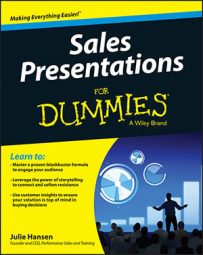Your sales presentation needs a good, clear framework for your message. Not only does the right structure help you efficiently get from point A to point B, but it also serves some other very important functions:
Organizing your message: You've gathered a lot of insights and information prior to your presentation. You may well feel a bit overwhelmed by the sheer volume of it. Attempting to include all of it makes for a bloated presentation that doesn't necessarily hit the mark. You can easily get lost in the weeds by overexplaining or discussing topics that aren't relevant when you don't have a solid structure to follow. A good structure helps you get your arms around all that information, prioritize, and organize it in a way that has the greatest impact on your audience.
Simplifying your message: Without a clear, easy-to-follow, and consistent structure, a presentation can make your product seem even more complex than it is. If your solution has any complexity to it at all (which of course applies to nearly everyone), you need a structure that makes your product or service appear, if not easy, at least not daunting for the prospect to adopt and put into use.
Moving your audience: A good structure takes your audience on a journey that leads to a natural and obvious conclusion. Because buying decisions are rarely based on logic alone, your structure should allow room for making a strong emotional case as well.
The more complex your solution, the more critical you follow a clear structure.

